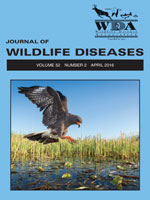Sea otters (Enhydra lutris) have exceptionally high energetic requirements, which nearly double during lactation and pup care. Thus, females are extremely vulnerable to caloric insufficiency. Despite a number of compensatory strategies, the metabolic challenge of reproduction culminates in numerous maternal deaths annually. Massive depletion of energy reserves results in a case presentation that we define as end-lactation syndrome (ELS), characterized by moderate to severe emaciation not attributable to a concurrent, independent disease process in females dying during late pup care or postweaning. We compiled detailed data for 108 adult female southern sea otters (Enhydra lutris nereis) examined postmortem that stranded in California, US, 2005–12, and assessed pathology, reproductive status, and the location and timing of stranding. We introduce simple, grossly apparent, standardized physical criteria to assess reproductive stage for female sea otters. We also describe ELS, examine associated risk factors, and highlight female life history strategies that likely optimize reproduction and survival. Our data suggest that females can reset both the timing and energetic demands of reproduction through fetal loss, pup abandonment, or early weaning as part of specific physiologic checkpoints during each reproductive cycle. Females appear to preload nutritionally during delayed implantation and gestation to increase fitness and reproductive success. We found that ELS was a major cause of death, affecting 56% of enrolled adult females. Peak ELS prevalence occurred in late spring, possibly reflecting the population trend toward fall/winter pupping. Increasing age and number of pregnancies were associated with a higher risk of ELS. Although the proportion of ELS females was highest in areas with dense sea otter populations, cases were recovered throughout the range, suggesting that death from ELS is associated with, but not solely caused by, population resource limitation.
How to translate text using browser tools
1 April 2016
THE HIGH COST OF MOTHERHOOD: END-LACTATION SYNDROME IN SOUTHERN SEA OTTERS (ENHYDRA LUTRIS NEREIS) ON THE CENTRAL CALIFORNIA COAST, USA
Sarah M. Chinn,
Melissa A. Miller,
M. Tim Tinker,
Michelle M. Staedler,
Francesca I. Batac,
Erin M. Dodd,
Laird A. Henkel
ACCESS THE FULL ARTICLE

Journal of Wildlife Diseases
Vol. 52 • No. 2
April 2016
Vol. 52 • No. 2
April 2016
ELS
emaciation
end-lactation syndrome
Enhydra lutris nereis
lactation
maternal care
metabolism




